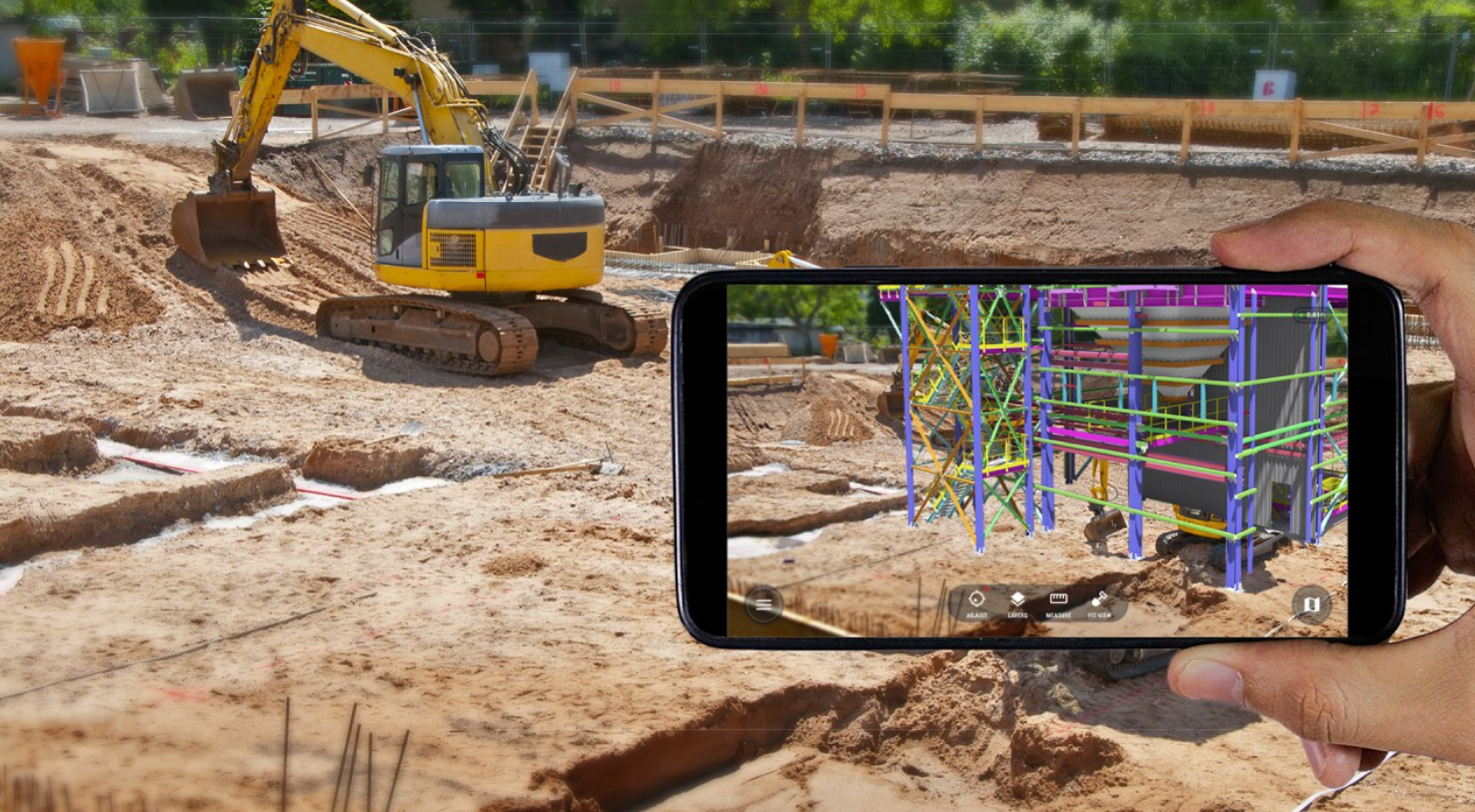Over recent years, augmented reality (AR) tools have seen a dramatic increase in adoption in the construction sector. AR’s rising popularity is because it’s designed to aid various aspects of project planning and execution on site, such as planning and design, as well as project management and site execution.
This article explores the impact that augmented reality construction solutions have made in the construction industry and the potential it holds for the future.
Table of Contents
What is augmented reality?
Augmented reality (AR) integrates digital data directly into a user’s real-world environment in real-time, using devices such as smartphones, tablets, or AR glasses.
AR and construction
Building Information Modeling (BIM) and 3D printing have already made waves in the construction industry. Augmented reality furthers this concept by offering real-time interaction and visualization of digital information in physical environments — something BIM/3D printing simply cannot do.
AR technology can greatly assist construction projects as it improves communication, collaboration, and decision-making, which improves project results in many ways.
AR construction benefits
Augmented reality technology applied to construction can dramatically enhance project visualization. By overlaying 3D models into real-world settings, stakeholders are better able to comprehend design concepts while making informed decisions regarding materials, finishes and layout choices.
AR can increase project efficiency by permitting rapid changes or updates during early project stages. AR also helps improve collaboration and communication among all parties involved in construction projects, from designers and contractors to clients and clients themselves.
When given real-time digital data access, designers, contractors, and clients can collaborate more efficiently on construction projects, resulting in reduced delays, better communication, and improved on-site coordination, leading to increased productivity and accuracy in project delivery.
Challenges and opportunities
While augmented reality tools for construction offer many benefits, their implementation can also present some obstacles. Implementation costs vary significantly based on the complexity of tools utilized and type. As such, AR technology may only be affordable by large construction firms with substantial budgets.
Second is the need for expert training. AR tools may seem straightforward at first glance, but their use often necessitates specific expertise. As businesses invest in employee education programs as part of an AR project implementation strategy, employee training costs could add significantly.
Future of AR construction
Augmented reality construction technology looks bright despite any initial challenges it might present. It is likely to become widely adopted as its technology improves and becomes more affordable, leading to better project outcomes, lower costs, and enhanced safety on construction sites.
Conclusion
Augmented reality holds immense potential to transform how construction projects are planned and executed. AR tools aid communication and collaboration by offering real-time access to digital information in physical settings. Even though hurdles remain, AR construction solutions promise a promising future in the building sector.
Now is the time to discover how AR can transform your construction project and keep up with an industry that continues to change rapidly. AR’s potential is boundless for construction, and the future will continue exploring and expanding upon it as technology.











